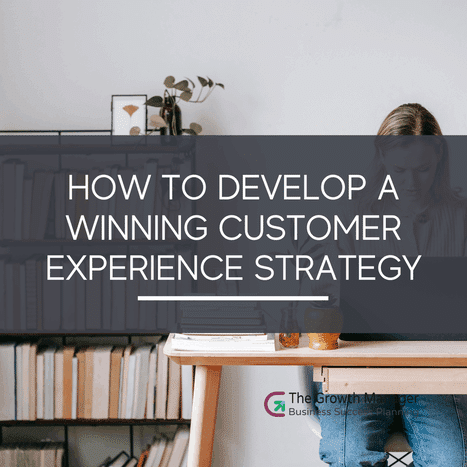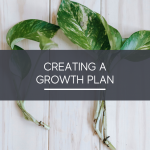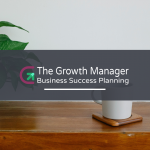Crafting an Unparalleled Customer Experience Strategy for Lasting Success
A shopper visits an online store, searching for the perfect gift. The website loads instantly, featuring a sleek design and an easy-to-navigate layout. Every detail is thoughtfully placed—clear product descriptions, readily available customer reviews, and high-resolution images that showcase the item from every angle. At checkout, their preferred payment method is an option, and shipping details are transparent—no hidden surprises. Moments after completing the purchase, a confirmation email with tracking information arrives, reinforcing their confidence and making them eager to shop again.
Now, picture a different scenario. Another customer clicks on a website link, only to wait endlessly for it to load. The search function is clunky, the product descriptions are vague, and the checkout process is a hassle, requiring customers to re-enter their details multiple times. Frustrated, they abandon their cart and take their business elsewhere.
In today’s fast-paced digital landscape, customer experience (CX) isn’t just a buzzword—it’s the deciding factor between a brand that earns loyalty and one that gets left behind. A seamless, intuitive shopping journey builds trust, while a frustrating one drives customers straight to competitors.
So, how can businesses create an online experience that truly stands out? Let’s dive into the essential steps for crafting a CX strategy that goes beyond expectations and leaves a lasting impression.
 Step 1: Gain Deep Customer Insights
Step 1: Gain Deep Customer Insights
A standout CX begins with a profound understanding of your audience—not just their demographics but their motivations, frustrations, and decision-making triggers. The better you understand their journey, the more effectively you can design experiences that feel intuitive, engaging, and effortless.
Discover What Drives Your Customers: See What They See, Hear What They Don’t Say
A first-time shopper lands at an online boutique, excited to buy a handcrafted leather wallet. The homepage looks stylish, but the product pages are missing key details—no dimensions, no close-up images, and no information on materials. They hesitate, unsure if it will fit their needs. After a few clicks, they abandon the site.
The store team takes action. They analyse customer drop-off points, read reviews, and identify a common pain point—lack of product details. So, they enhance their product pages with detailed descriptions, high-resolution images, and a video showcasing the wallet’s size and features. The result? A 30% increase in conversions and fewer customer inquiries.
Why it matters: Understanding customer frustrations allows businesses to remove barriers in the buying journey. When brands listen and adjust, they improve trust, engagement, and sales.
Build Customer Personas That Reflect Real Journeys
The Impulse Buyer: A 24-year-old social media enthusiast scrolls through Instagram when an ad for a trendy phone case catches their eye. They click through, but the long checkout process asks for too much information. They lose interest and move on. When the store implements a one-click checkout option, suddenly, those lost sales turn into instant conversions.
The Hesitant Shopper: A 35-year-old parent browses an online toy store for their child’s birthday. They’re unsure about quality, durability, and safety, so they exit without buying. The store has introduced a “Verified Parent Reviews” section and a live chat feature. Now, hesitant shoppers get instant reassurance, leading to more completed purchases.
The Premium Customer: A 50-year-old executive is looking for a high-end watch. They don’t have time to browse, so they expect curated options. Instead of navigating pages of listings, they engage with a “Personal Shopper” chatbot that instantly recommends three luxury pieces based on their preferences. Within minutes, they place an order.
Why it matters: Not all customers shop the same way. By identifying different buyer personas, businesses can personalise the experience, reduce friction, and make the journey effortless—turning casual browsers into loyal customers.
- Behaviour-Driven Personas: Go beyond simple demographics—consider what problems need to be solved and how they interact with your brand.
- Tailor Messaging and Services: A tech-savvy millennial exploring self-service options has vastly different expectations from a time-poor executive who prefers white-glove assistance.
Each of these people needs financial guidance, but they won’t respond to the same experience.
- Budget-Conscious Savers thrive with automated insights and hands-off tools.
- Goal-oriented investors engage with personalised strategies and expert advice.
- Time-poor executives expect white-glove service, valuing efficiency over exploration.
An organisation that recognises these nuances doesn’t just offer a service—it offers the right service to the right customer in the right way. By designing experiences around real behaviours, businesses turn one-time interactions into long-term loyalty.
Step 2: Map the Customer Journey
Understanding how customers interact with your brand from start to finish is key to delivering a smooth, frustration-free experience. A well-defined customer journey map helps visualise each stage, ensuring every touchpoint is optimised for engagement and satisfaction.
Identify Critical Touchpoints
Think about every moment a customer engages with your business, whether online or offline. This includes:
- Digital interactions: Website visits, social media engagement, email communication, and customer service interactions.
- In-person experiences: Shopping in-store, attending an event, or speaking with a sales representative.
Uncover Roadblocks
Customers often face challenges that slow down or complicate their experience. Some common pain points include:
- Confusing website navigation leads to abandoned purchases.
- Long response times in customer service affect trust.
- Gaps in communication between online and offline interactions.
By identifying and addressing these barriers, businesses can create a smoother, more enjoyable experience that keeps customers engaged and moving seamlessly through their journey.
Step 3: Pinpoint Critical Touchpoints
To cultivate an exceptional customer experience, businesses must meticulously delineate every interaction between the brand and its clientele—both digital and physical.
Map Out Engagement Channels
- Digital interfaces: Website navigation, social media dialogues, email correspondences, and customer service exchanges.
- Offline encounters: In-store engagements, industry symposiums, and networking assemblies.
Diagnose Friction Points
- Uncover recurring impediments that hinder the customer’s progression at various junctures.
- Deploy strategic enhancements to refine these interactions, ensuring a fluid and gratifying journey.
A well-articulated customer journey map eradicates redundant barriers, fostering an intuitive and frictionless engagement from inception to conversion.
Step 4: Establish Definitive CX Benchmarks
Without clear goals, optimising customer experience can feel like navigating uncharted waters. Defining tangible and measurable objectives anchors your CX strategy to overarching business aspirations.
Set Precision-Driven Milestones
- Elevate customer retention metrics by X% within six months.
- Reduce response times for inquiries from 24 hours to 12 hours.
Synchronise with Enterprise Expansion
- Align CX enhancements with broader commercial imperatives, such as amplifying brand advocacy and bolstering conversion ratios.
Setting well-defined objectives furnishes a structured framework, ensuring that efforts remain targeted and impactful.
Step 5: Cultivate a Customer-First Workforce
An extraordinary customer experience is orchestrated by an empowered and adept team poised to deliver unparalleled service.
Prioritise Progressive Employee Training
- Facilitate continuous learning modules on exemplary customer service methodologies.
- Equip personnel with advanced skills for adeptly resolving grievances with professionalism and finesse.
Instil a Culture of Ownership and Recognition
- Foster a workplace culture where employees take full proprietorship of customer interactions.
- Implement recognition programs to celebrate team members who surpass service expectations.
When employees feel valued, their enthusiasm translates into superior customer engagement, fostering lasting loyalty.
Step 6: Harness Technology to Elevate CX
Strategic technological integration optimises efficiency, refines automation, and tailors interactions to individual customer preferences.
Leverage an Intelligent CRM Ecosystem
- Chronicle customer touchpoints to curate hyper-personalised service.
- Deploy segmentation algorithms for precision-driven marketing initiatives.
Automate for Seamless Interactions
- Deploy AI-driven chatbots for instantaneous support resolutions.
- Utilise automated email workflows for strategic follow-ups and sustained engagement.
A tech-empowered CX strategy ensures your brand remains agile, responsive, and attuned to evolving customer expectations.
Step 7: Hyper-Personalise the Customer Experience
Modern consumers anticipate meticulously curated interactions that resonate with their individual inclinations.
Custom-Tailor Communication Cadences
- Utilise behavioural analytics to dispatch bespoke email recommendations.
- Proffer product suggestions derived from browsing patterns and historical transactions.
Refine Engagement Tactics
- Address patrons by name in all brand communications to enhance rapport.
- Extend exclusive, behaviour-based incentives to fortify brand allegiance.
Step 8: Gauge and Refine Performance
To create a dynamic and ever-evolving CX strategy, businesses must track and interpret key performance indicators (KPIs), ensuring their initiatives remain agile and customer-centric.
Decipher Critical CX Metrics
- Net Promoter Score (NPS): Measures customer loyalty and advocacy.
- Customer Satisfaction Score (CSAT): Captures immediate sentiment post-interaction.
- Customer Retention Rate: Evaluates sustained engagement and relationship-building efforts.
Commit to Perpetual Refinement
- Conduct frequent audits of performance analytics to pinpoint emerging patterns and recalibrate strategies.
- Stay attuned to market shifts and industry innovations to anticipate evolving customer expectations.
CX Excellence: A Journey, Not a Destination
Crafting an extraordinary customer experience is a continuous pursuit of refinement, innovation, and adaptability. Your business can forge a competitive edge while nurturing lasting customer loyalty by cultivating deep customer insights, embracing technology, and iterating strategies based on data-driven insights.
Ready to Transform Your Customer Experience?
A high-impact CX strategy begins with a profound understanding of the customer journey. The Growth Manager’s Consumer Sales Journey Guide offers an in-depth, step-by-step roadmap to help you decode, optimise, and elevate your sales process for maximum influence.






